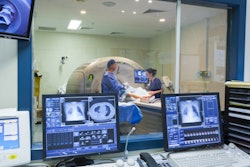
If given the choice, referring physicians would appreciate receiving recorded audiovisual radiology reports with radiologists on video explaining key findings while sharing screen captures from their radiology workstations, according to research published online August 20 in the Journal of Digital Imaging.
A team of Brazilian researchers led by Dr. Luis Pecci Neto of Hospital do Coração and Teleimagem in São Paulo developed an audiovideo reporting tool using screen-capture software and tested it over a two-month period on emergency musculoskeletal (MSK) imaging studies. After surveying orthopedic surgeons, they found the video reports may improve communication and make imaging findings -- especially in complex cases -- easier to understand.
"These results support the potential of this technology to re-establish the radiologist's role as an essential member of patient care and also provide more engaging, precise, and personalized reports," the authors wrote.
The researchers hypothesized that supplementing a traditional text-based radiology report with an audiovisual report that focused on simplifying a complicated case could be similar to an in-person consult with the radiologist.
"Those videos' contents could be viewed at the convenience of the ordering provider to minimize disruptions in workflow and retain the radiologist's essential role in a multidisciplinary team," they wrote. "Also, audiovisual reports could be sent or shared to the patients for better understanding of their conditions and reinsert the radiologist as another health provider in clinical care."
In their study, seven attending musculoskeletal radiologists with experience ranging from six to 15 years used Screencast-O-Matic software and a standard radiology workstation Dictaphone to create videos for all 47 emergency department MSK imaging studies over a two-month period. All videos were created after the preliminary text report was dictated and were saved as MP4 files for uploading to their institution's PACS.
The video reports were limited to two minutes and focused on the pertinent positives or negatives of a case, according to the researchers. After viewing the videos and reading the text reports, participating clinicians completed a six-question survey on the quality and utility of the videos. They also responded to a questionnaire at the end of the two-month study to ascertain their overall experience and impressions of this type of report.
Overall, only 18.2% of participating clinicians preferred to receive only the text report. In addition, 72.7% strongly agreed the audiovisual report improved their understanding of the findings in complex cases while 27.3% agreed with that statement. Over half either agreed or strongly agreed that the audiovisual report dispensed with the need for a face-to-face discussion with the radiologist.
The authors said further studies are necessary to evaluate the acceptance of these video reports in nonurgent cases, as well as in other radiology specialties such as neuroradiology, internal medicine, breast imaging, and interventional radiology.
"The transformation of an audiovisual report into a billable and profitable radiology activity with the potential of replacing the traditional text report will likely be determined by its acceptance by radiologists, ordering physicians, and patients, after its widespread acknowledgment and proven effectiveness for healthcare improvement," they wrote.



















